Treatment for bloody noses. Nosebleed Treatment and Prevention: Expert Guide to Managing Epistaxis
How to stop a nosebleed quickly and effectively. What causes frequent nosebleeds in adults and children. When should you seek medical attention for a nosebleed. How to prevent recurring nosebleeds at home.
Understanding Nosebleeds: Causes and Risk Factors
Nosebleeds, medically known as epistaxis, are a common occurrence that can affect people of all ages. While often harmless, they can be alarming and, in some cases, indicate underlying health issues. Understanding the causes and risk factors can help in prevention and management.
Common Causes of Nosebleeds
- Dry air (low humidity)
- Nose picking
- Forceful nose blowing
- Trauma or injury to the nose
- Medication side effects (e.g., blood thinners)
- Allergies
- High altitudes
Do environmental factors play a significant role in nosebleeds? Indeed, they do. Dry air, whether from winter heating or hot, low-humidity climates, is one of the most common triggers. This is because dry air can cause the nasal membranes to crack and bleed.
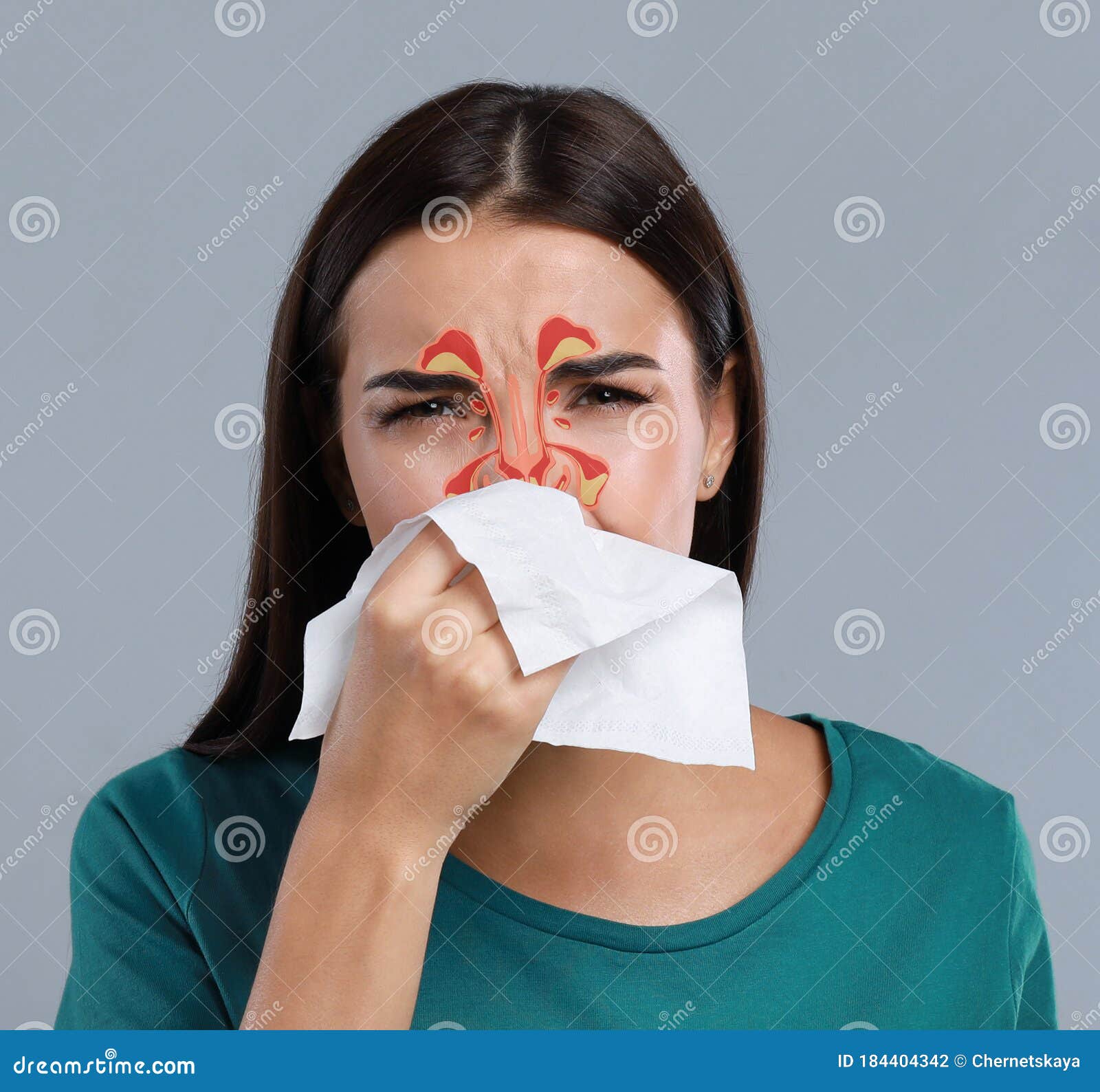
Risk Factors for Frequent Nosebleeds
Certain individuals may be more prone to nosebleeds due to various factors:
- Age (children and older adults are more susceptible)
- Use of anticoagulant medications
- Chronic conditions like hypertension or blood clotting disorders
- Frequent use of nasal sprays or medications
- Structural abnormalities in the nose
Can certain lifestyle choices increase the risk of nosebleeds? Absolutely. Smoking, for instance, can irritate and dry out the nasal passages, making them more susceptible to bleeding.
Immediate Steps to Stop a Nosebleed
When faced with a nosebleed, quick and proper action can help stop the bleeding faster and prevent complications. Follow these steps for effective nosebleed management:
- Remain calm to avoid increasing blood pressure
- Sit upright and lean slightly forward
- Pinch the soft part of your nose firmly for 10-15 minutes
- Breathe through your mouth while holding your nose
- Avoid lying down or tilting your head back
- Apply a cold compress to your nose and cheeks
Is it advisable to tilt your head back during a nosebleed? Contrary to popular belief, this is not recommended. Tilting your head back can cause blood to flow down your throat, potentially leading to nausea, vomiting, or choking.

After the Bleeding Stops
Once the bleeding has stopped, it’s crucial to take care not to disturb the newly formed clot:
- Avoid blowing your nose for several hours
- Don’t bend down or engage in strenuous activities
- Keep your head elevated while sleeping
- Use a humidifier to keep the air moist
Why is it important to avoid physical exertion after a nosebleed? Physical activity can increase blood pressure and potentially dislodge the clot, leading to renewed bleeding.
When to Seek Medical Attention for Nosebleeds
While most nosebleeds can be managed at home, certain situations warrant medical attention:
- Bleeding that continues for more than 30 minutes despite proper first aid
- Frequent nosebleeds (more than once a week)
- Heavy blood loss causing lightheadedness or fainting
- Nosebleeds accompanied by other symptoms like high fever or easy bruising
- Bleeding after a serious injury to the head or face
Should you go to the emergency room for a nosebleed? If the bleeding is severe, doesn’t stop with home treatment, or is accompanied by concerning symptoms, seeking immediate medical care is advisable.

Medical Interventions for Persistent Nosebleeds
In cases where nosebleeds are severe or recurrent, healthcare providers may employ various treatments:
- Cauterization: Using heat or chemicals to seal blood vessels
- Nasal packing: Inserting gauze or special materials to apply pressure
- Medication adjustments: If blood thinners are contributing to the problem
- Surgery: In rare cases, to correct structural issues or persistent bleeding sites
How effective is cauterization for treating recurrent nosebleeds? Cauterization can be highly effective, with success rates of up to 80% in preventing future nosebleeds from the treated blood vessel.
Preventing Nosebleeds: Effective Strategies
While not all nosebleeds can be prevented, several strategies can significantly reduce their frequency:
Maintaining Nasal Moisture
- Use a saline nasal spray to keep the nasal passages moist
- Apply a thin layer of petroleum jelly inside the nostrils
- Use a humidifier in your home, especially during dry seasons
Lifestyle Modifications
- Quit smoking and avoid secondhand smoke
- Trim fingernails and discourage nose picking, especially in children
- Use protective gear during sports or activities with a risk of nasal injury
- Manage allergies effectively to reduce nasal irritation
Can dietary changes help prevent nosebleeds? While not directly related, a diet rich in Vitamin K and foods that support blood vessel health may be beneficial. However, consult with a healthcare provider before making significant dietary changes, especially if you’re on blood thinners.

Nosebleeds in Children: Special Considerations
Nosebleeds are particularly common in children, often causing concern for parents. Understanding how to manage and prevent nosebleeds in children is crucial:
Managing Nosebleeds in Kids
- Teach children to sit upright and lean forward during a nosebleed
- Show them how to pinch their nose properly
- Encourage calm behavior to prevent aggravating the bleeding
- Use ice packs or cold compresses to soothe and constrict blood vessels
Preventive Measures for Children
- Keep children’s fingernails short to discourage nose picking
- Use a humidifier in their bedroom
- Teach gentle nose-blowing techniques
- Ensure they wear protective gear during sports
Are frequent nosebleeds in children a cause for concern? While occasional nosebleeds are common in children, frequent or severe episodes should be evaluated by a pediatrician to rule out underlying issues.
Understanding Hereditary Hemorrhagic Telangiectasia (HHT)
Hereditary Hemorrhagic Telangiectasia (HHT), also known as Osler-Weber-Rendu syndrome, is a rare genetic disorder that affects blood vessels and can cause frequent nosebleeds among other symptoms.
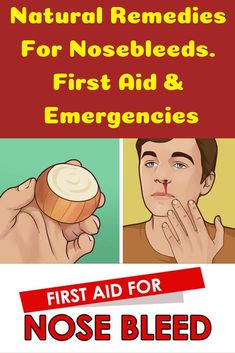
Key Facts About HHT
- Genetic disorder affecting blood vessel formation
- Can cause abnormal connections between arteries and veins
- Affects approximately 1 in 5,000 people worldwide
- Often underdiagnosed due to variable symptoms
How is HHT related to nosebleeds? HHT can cause fragile blood vessels to form in the nose, leading to frequent and sometimes severe nosebleeds, which are often one of the earliest and most common symptoms of the condition.
Symptoms and Diagnosis of HHT
Symptoms of HHT can vary widely among affected individuals but may include:
- Recurrent nosebleeds
- Small red or purple spots on the skin (telangiectasias)
- Internal bleeding, particularly in the digestive tract
- Shortness of breath or exercise intolerance
- Headaches or neurological symptoms
Diagnosis typically involves a combination of clinical evaluation, family history, and genetic testing. If HHT is suspected, especially in cases of frequent, severe nosebleeds, consultation with a geneticist or HHT specialist is recommended.

Advanced Treatments for Chronic Nosebleeds
For individuals suffering from chronic or severe nosebleeds, especially those associated with conditions like HHT, advanced treatment options may be necessary:
Specialized Medical Interventions
- Laser therapy to seal problematic blood vessels
- Embolization procedures to block abnormal blood vessels
- Septal dermoplasty to replace the inner lining of the nose
- Hormone therapy (in specific cases)
Ongoing Management Strategies
- Regular follow-ups with ENT specialists
- Monitoring of iron levels and potential anemia
- Psychological support for coping with chronic condition
- Participation in clinical trials for new treatments
How effective are these advanced treatments for severe nosebleeds? While success rates vary, many patients experience significant improvement in the frequency and severity of nosebleeds with specialized treatments. However, the effectiveness can depend on the underlying cause and individual factors.
Nosebleeds, while common, can range from minor nuisances to indicators of more serious health conditions. Understanding the causes, proper management techniques, and when to seek medical attention is crucial for effective care. For those experiencing frequent or severe nosebleeds, especially if accompanied by other symptoms, consulting with a healthcare provider is essential to rule out underlying conditions and develop an appropriate treatment plan. With the right approach, most nosebleeds can be effectively managed, allowing individuals to minimize their impact on daily life and overall health.

How To Stop & Prevent Nosebleeds
Why Is My Nose Bleeding?
Several things can trigger a nosebleed. The most common cause is dry air, either from having the heat on in winter or being in a hot, low-humidity climate. Other causes include:
Picking your nose
Blowing your nose too hard often
Injuries caused by a fall or getting hit in your nose
Side effects of medication, like blood thinners
Allergies
High altitudes, where the air is thin
How Do I Stop My Nosebleed?
Nosebleeds usually aren’t serious. You can treat most by yourself at home by doing the following:
- Stay calm. If you start to get nervous, it can actually make you bleed more.
 Try to relax.
Try to relax. - Sit up, don’t lie down. Keep your head above your heart.
- Lean a little bit forward. This keeps the blood from draining down the back of your throat.
- Pinch your nostrils closed. Use your thumb and index finger to hold your nostrils closed for 5 to 10 minutes while you breathe through your mouth. This puts pressure on the part of your nose that’s bleeding and can make the blood stop flowing.
Once the bleeding has stopped, do not touch or blow your nose. This may start it bleeding again. But if it does restart, gently blow your nose to get rid of any blood clots. You can also spray a decongestant such as oxymetazoline (Afrin, Mucinex, or Vicks Sinex) in both nostrils. Then pinch your nostrils shut and breathe through your mouth for 5 to 10 minutes.
Call your doctor if:
If your doctor can’t get your nosebleed to stop with pressure, they might try:
Cauterization. This procedure burns a blood vessel closed. After your doctor numbs your nose, they’ll use either a heated electronic device (an electrocautery) or a chemical called silver nitrate to close the leaky blood vessel.
This procedure burns a blood vessel closed. After your doctor numbs your nose, they’ll use either a heated electronic device (an electrocautery) or a chemical called silver nitrate to close the leaky blood vessel.
Packing.Your doctor puts a latex balloon or gauze into your nostril. This puts a lot of pressure on a blood vessel until it closes.
How to Prevent Nosebleeds
You can’t always prevent nosebleeds from happening, but there are certain things you can do to help lower your chances of getting them:
- Keep the inside of your nose moist. Dryness can cause nosebleeds. Use a cotton swab to gently smear a thin layer petroleum jelly in your nostrils three times a day, including before you go to sleep. You can also use an antibiotic ointment like Bacitracin or Polysporin.
- Use a saline nasal product. Spraying it in your nostrils helps keep the inside of your nose moist.
- Use a humidifier.
 Your nostrils might be dry because the air in your house is dry.
Your nostrils might be dry because the air in your house is dry. - Don’t smoke.Smoking can irritate the inside of your nose and dry it out.
- Don’t pick your nose. Also, don’t blow or rub it too hard. If your child is getting nosebleeds, keep their fingernails short and discourage them from picking their nose.
- Don’t use cold and allergy medications too often. These can dry out your nose. In some cases, certain medications can cause nosebleeds or make them worse. You may need to discuss your medications with your doctor. But keep taking them unless your doctor tells you to stop.
Hereditary Hemorrhagic Telangiectasia (HHT)
Overview
What is hereditary hemorrhagic telangiectasia (HHT)?
Hereditary hemorrhagic telangiectasia (HHT) is a genetic disorder that affects blood vessels. In HHT, also called Osler-Weber-Rendu syndrome, either the small capillaries are abnormal and these are called telangiectasias and/or the capillary connection between arteries and veins are abnormal and these are called arteriovenous malformations. Capillaries are tiny blood vessels. They connect arteries (which carry blood away from the heart) and veins (which return blood to the heart).These abnormal blood vessels are fragile and can burst, causing bleeding (hemorrhaging) and other complications. The symptoms and complications depend on where in the body these abnormal blood vessels form.
Capillaries are tiny blood vessels. They connect arteries (which carry blood away from the heart) and veins (which return blood to the heart).These abnormal blood vessels are fragile and can burst, causing bleeding (hemorrhaging) and other complications. The symptoms and complications depend on where in the body these abnormal blood vessels form.
Who might get hereditary hemorrhagic telangiectasia (HHT)?
HHT can affect men, women, and children from all racial and ethnic groups. It’s genetic, so it runs in families. The disorder is rare, but it’s also underdiagnosed, meaning many people have it without knowing. It’s estimated to affect 1 in 5,000 people worldwide, but a high percentage aren’t clinically diagnosed.
Symptoms and Causes
What causes hereditary hemorrhagic telangiectasia (HHT)?
HHT is genetic, meaning it’s passed down from parents to children. It’s a dominant disorder, caused by one copy of one abnormal gene from one parent. Hundreds of possible mutations in six different genes have been linked to HHT, but the vast majority of cases are due to mutations in two genes, ENG and ACVRL1.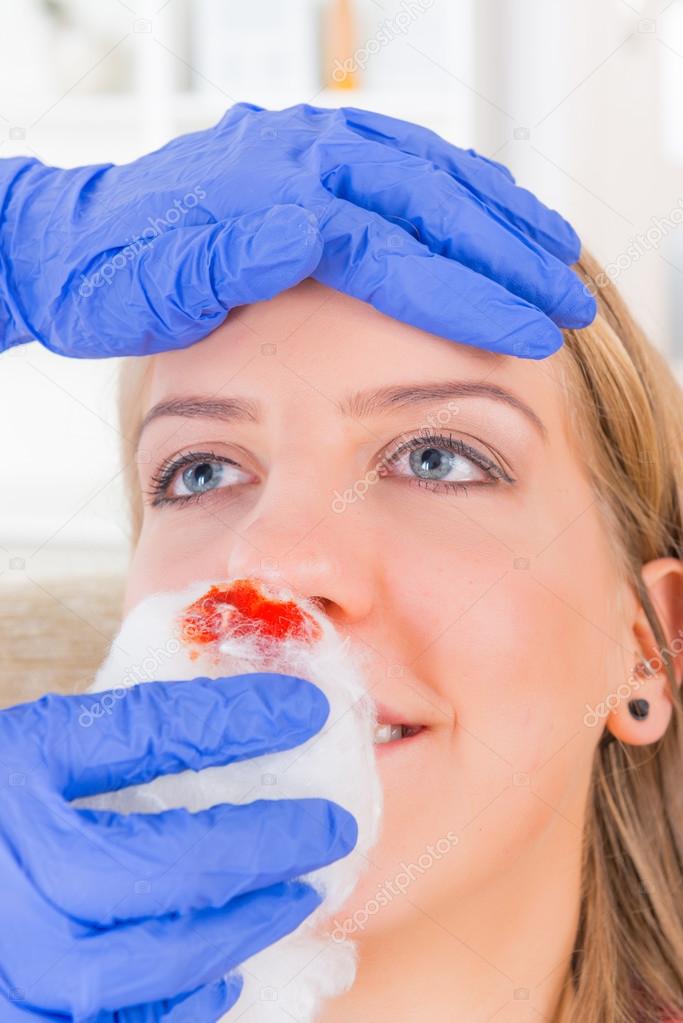 Scientists are still studying the mutations and genes involved.
Scientists are still studying the mutations and genes involved.
What are the symptoms of hereditary hemorrhagic telangiectasia (HHT)?
The symptoms of HHT vary from person to person, depending on where abnormal blood vessels develop in the body. Some people may have no significant signs, but others may develop very serious symptoms.
The most common symptom is frequent nosebleeds (epistaxis).
Some people with HHT also might have delicate red spots on certain parts of the body. They may get lighter when you press on them and are common on the:
- Face.
- Fingers or fingertips.
- Hands.
- Lining of the mouth.
- Lips.
- Nose.
Some people with HHT may also have:
- Anemia (not enough red blood cells).
- Bleeding in the stomach or intestines.
People with HHT may develop abnormalities in larger blood vessels, called arteriovenous malformations (AVMs). AVMs can form in the lungs, brain, spinal cord and liver, and they can cause:
Rare but serious complications can occur when an AVM hemorrhages, such as:
- Dizziness, double vision, seizures and strokes, if the condition affects blood vessels in the brain.

- Heart failure, as the heart works harder to provide blood throughout the body, if HHT affects the liver.
- Back pain or numbness in the arms or legs, if HHT affects the spine.
Can I give hereditary hemorrhagic telangiectasia (HHT) to my children?
If you have HHT, there is a 50% chance for each child to inherit it.
Diagnosis and Tests
How is hereditary hemorrhagic telangiectasia (HHT) diagnosed?
Genetic testing can identify HHT, but most people are diagnosed based on clinical information. A healthcare provider will likely:
- Ask detailed questions about your personal medical history.
- Ask questions about your immediate relatives’ medical history, especially your parents, siblings and children.
- Examine your body.
- Order tests to take pictures of your organs.
Your healthcare provider may diagnose HHT if they find at least three of the following:
- Repeat nosebleeds.

- Multiple telangiectasias in the typical locations on the skin.
- Internal telangiectasias or AVMs.
- A family history of HHT.
Management and Treatment
How is hereditary hemorrhagic telangiectasia (HHT) treated?
There is no cure for HHT, but treatments can improve symptoms and reduce the risk of serious complications. Scientists are still studying ways to treat HHT and advances are made in medicines that specifically target the formation of blood vessels.
Your healthcare provider treats you for existing symptoms and tests you for any HHT problems that haven’t shown symptoms yet.
Treatment may include:
- Ablation, a minor surgery to zap an area with a laser to make it stop bleeding.
- Embolization, a minor surgery to block an area that is bleeding or has potential risk for bleeding.
- Iron replacement or blood transfusion to treat anemia.
- Lubrication and moisture for nosebleeds.

- Radiation or surgery to remove AVMs.
- Anti-angiogenic medical therapies with infusions and pills.
You may need to see a specialist for treatment related to specific body systems, such as the liver, lungs, gastrointestinal system and brain.
Prevention
Can I prevent hereditary hemorrhagic telangiectasia (HHT)?
There is no way to prevent HHT or reduce your risk of getting it. But tell a healthcare provider if your parent, sibling or child has it. That may help you catch it early and prevent complications.
Outlook / Prognosis
What is the outlook for people with hereditary hemorrhagic telangiectasia (HHT)?
People with HHT have an almost average life expectancy. But AVMs in the lungs and brain and chronic bleeding are serious and should be treated.
Living With
What can I do about hereditary hemorrhagic telangiectasia (HHT) nosebleeds?
To help prevent nosebleeds:
- Avoid certain medications, such as aspirin and NSAIDs.

- Keep a journal to track if any foods or activities trigger nosebleeds.
- Keep your nose moist and lubricated all the time, using a humidifier, ointments and saline spray, for example.
What else can I ask my healthcare provider about hereditary hemorrhagic telangiectasia (HHT)?
If you’ve been diagnosed with HHT, consider asking your healthcare provider:
- Should anyone in my family get tested?
- Can I play sports?
- Should I avoid any particular activities?
- Should I avoid alcohol, certain foods or any medications?
- What can I do to prevent or stop nosebleeds?
- Is it safe for me to get pregnant?
- When should I seek medical attention for bleeding?
A note from Cleveland Clinic
HHT is a genetic disorder that often goes undiagnosed. Symptoms can range from frequent nosebleeds to serious complications in multiple body systems. If you suspect that you or a family member has HHT, talk to your healthcare provider. Early treatment can prevent complications, and genetic testing can determine what family members are affected.
Early treatment can prevent complications, and genetic testing can determine what family members are affected.
Symptoms, Causes, Treatment & Prevention
Overview
What are nasal polyps?
Nasal polyps are painless and benign (not cancerous) growths. They’re found in nasal passages and sinuses, hollow spaces in the bones around your nose. They form from mucous membranes — thin, soft tissue that lines these body parts.
Nasal polyps can get irritated and swollen, partially blocking the nasal passages and sinuses.
Who gets nasal polyps?
Nasal polyps don’t tend to develop until well into adulthood, when people are in their 30s or 40s. They’re usually linked with some cause of inflammation in the nose, such as:
Do nasal polyps happen on one side or both sides of the nose?
Nasal polyps usually appear on both sides. A growth on only one side may actually be something else, such as a cancerous tumor.
Symptoms and Causes
What causes nasal polyps?
Polyps develop because the mucous membranes lining the nose or sinuses change.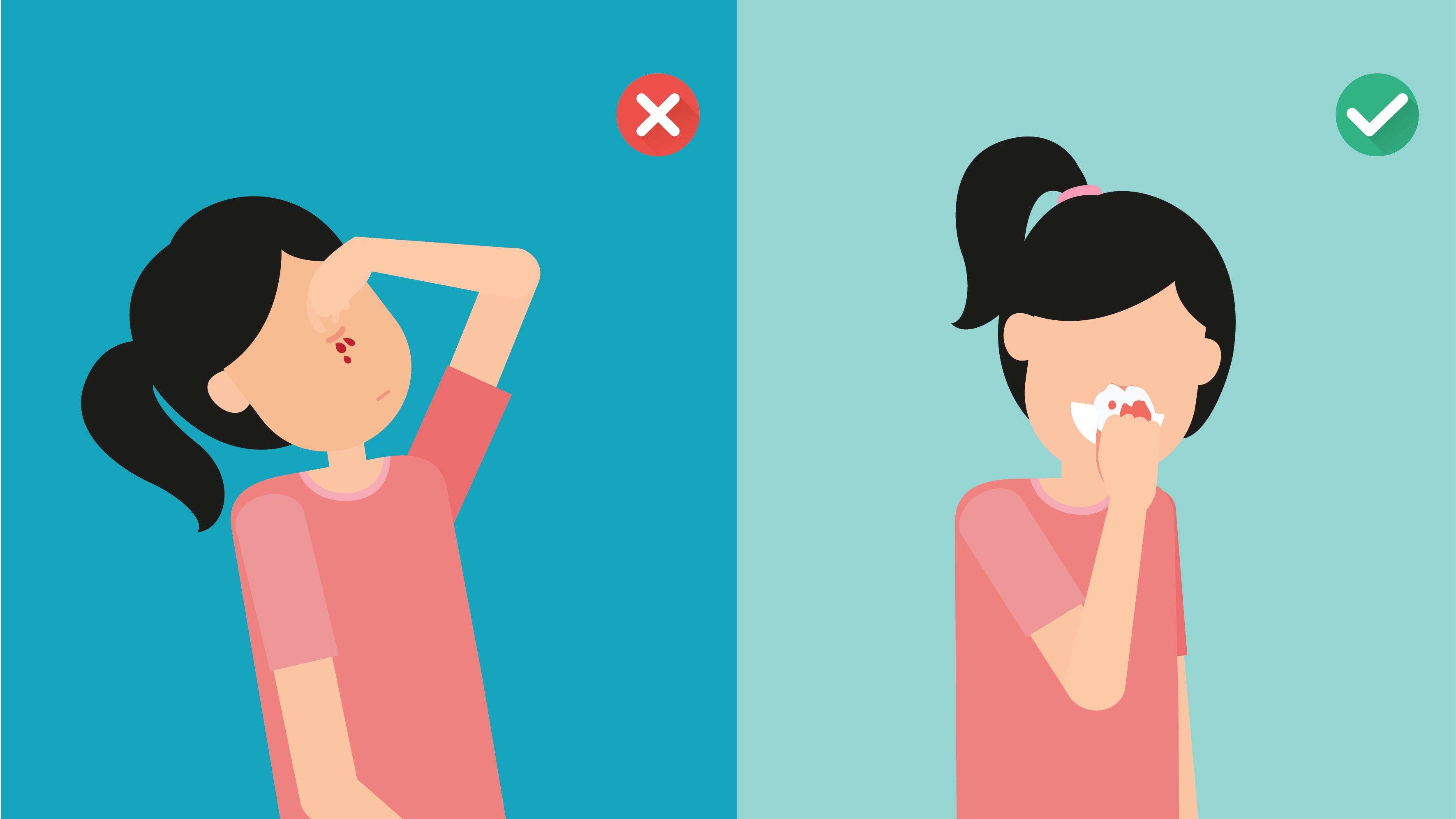 The membranes become inflamed for a long time or become inflamed over and over again. The inflammation features swelling, redness and fluid buildup.
The membranes become inflamed for a long time or become inflamed over and over again. The inflammation features swelling, redness and fluid buildup.
Researchers believe that allergies and infections cause the inflammation. They think that because they’ve studied tissue taken from nasal polyps. Those samples contained extra eosinophils, white blood cells linked to infections and allergic reactions. The evidence points to inflammation causing small growths filled with fluid. Those growths then turn into polyps.
What are the symptoms of nasal polyps?
Small polyps may not cause any symptoms. But as they grow, they may lead to:
- Headaches.
- Loss of smell or taste.
- Nasal congestion (stuffy nose).
- Nasal drainage (runny nose).
- Nosebleeds.
- Postnasal drip (constantly feeling like you have to clear your throat).
- Pressure or pain in the sinuses, face or top teeth.
- Snoring.
When polyps get big enough, they can block the nasal passages and sinuses, leading to:
- Frequent asthma attacks in people with asthma.

- Repeated sinus infections.
- Sleep apnea or other trouble sleeping.
- Trouble breathing, even in people who don’t have asthma.
Diagnosis and Tests
How are nasal polyps diagnosed?
If you have symptoms of nasal polyps, talk to a healthcare provider. To diagnose nasal polyps, the healthcare provider may:
- Ask about your health history, especially allergies, infections and asthma.
- Ask you about your symptoms and how long you’ve had them.
- Look inside your nose with a nasal endoscope (thin, flexible tube with a tiny camera and light).
- Order a CT scan to take detailed pictures inside your sinuses.
Management and Treatment
How are nasal obstructions treated?
Not all patients can be cured of nasal polyps, but several treatments can help:
- Steroid sprays to shrink polyps and improve symptoms.
- Oral steroids (pills you swallow).
- Injections (shots) under the skin to deliver a medicine called dupilumab.

- Outpatient (no overnight stay) surgery to place a tiny stent. It props open the nasal passages and delivers steroids or other medications.
- Outpatient surgery using endoscopy to remove polyps when other treatments don’t work.
Your healthcare provider also may prescribe antibiotics if you have an infection.
Prevention
How do I prevent nasal polyps?
Not everyone will be able to prevent nasal polyps. However, there are a few ways you may be able to help yourself. The strategies include the following:
- Follow your doctor’s instructions on taking your allergy and asthma medications.
- Avoid breathing airborne allergens or irritants that lead to inflammation of your nose and sinus cavities.
- Practice good hygiene.
- Use a humidifier in your home to help moisten your breathing passages.
- Use a saline nasal rinse or spray to remove allergens or other irritants that may cause nasal polyps.
Outlook / Prognosis
Can polyps come back after treatment?
Polyps often come back after treatment. Many people need to stay on steroid treatments for a long time or have repeat surgery.
Many people need to stay on steroid treatments for a long time or have repeat surgery.
Living With
What questions should I ask my healthcare provider about nasal polyps?
Consider asking your healthcare provider:
- How can I lessen the symptoms?
- Do I need medications or surgery or both?
- Should I restrict my activities?
- Do I need to see a specialist?
- Should I go to the emergency room for any symptoms?
A note from Cleveland Clinic
When nasal polyps grow in the nose or sinuses, they can cause bothersome symptoms and lead to infections. Talk to your healthcare provider about medications and short surgeries. These treatments can shrink nasal polyps and relieve symptoms.
10 Tips for Stopping a Bloody Nose
Let’s face it: There is never a convenient time to get a bloody nose.
SEE ALSO: Tips for Treating Kids After Common Injuries
They’re messy, make us stop what we’re doing and, frankly, can be a little scary.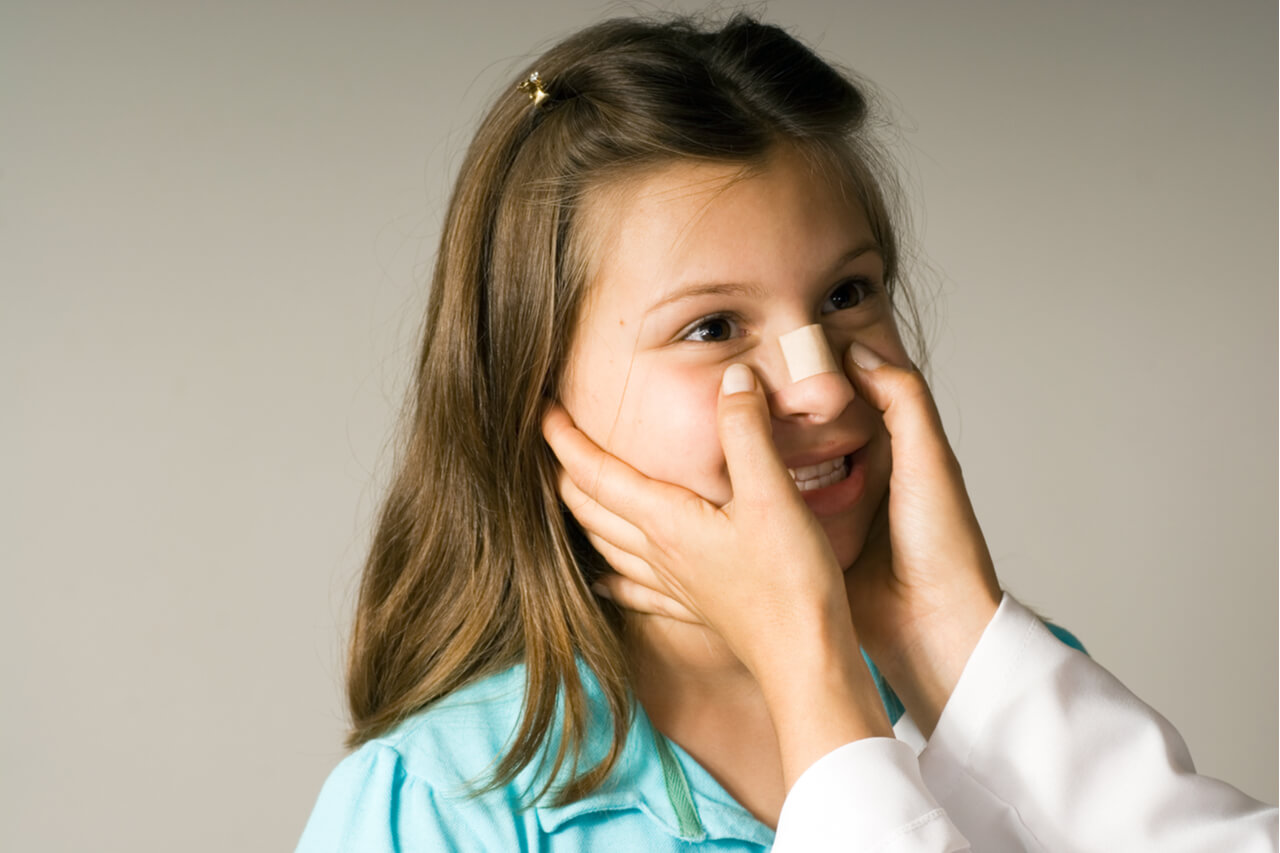 The fact that a bloody nose can happen to anyone at any time, especially during the cold, dry months of winter, does not make them any less shocking.
The fact that a bloody nose can happen to anyone at any time, especially during the cold, dry months of winter, does not make them any less shocking.
But know this: Nosebleeds are common. The good news is that nosebleeds are harmless for most people — and the tools you need to handle them are likely already in your home.
Typical causes of nosebleeds include dry climate, heated indoor air during winter months, steroid nasal sprays or direct injury to the nose. People who take blood-thinning medications (anticoagulants) also are more likely to get a bloody nose.
No matter when or how your nose starts bleeding, these simple strategies can help:
Steps to stop a bloody nose
Keep calm. Bloody noses can be scary, but they are rarely dangerous.
Lean forward. If there is blood in your mouth, spit it out; do not swallow it.
Stay upright. Do not tilt your head back or lie flat.
 This may cause you to choke on blood. Blood in the stomach can make you sick to your stomach and cause vomiting.
This may cause you to choke on blood. Blood in the stomach can make you sick to your stomach and cause vomiting.Try a spray. Apply three sprays of decongestant nose spray, such as Afrin, into the side that is bleeding.
Skip foreign objects. Do not pack the nose with tissues or other household items like tampons. This can make the bleeding worse.
Use a pinch. Pinch the soft part of your nose shut for 10 minutes. Use a clock to keep track of time. Resist the urge to peek after a few minutes to see if your nose has stopped bleeding.
Observe and react. After 10 minutes, let go of your nose. If it is still bleeding, soak a cotton ball with the nose spray. Place the cotton ball into the bleeding nostril and pinch for 10 minutes. Again, use a clock to time it.
Check your blood pressure. High blood pressure can cause nosebleeds.

Take it easy. Once bleeding has stopped, do not blow your nose for two days.
Avoid exertion. It can take up to two full weeks to heal after a nosebleed. Do not lift anything heavy, such as groceries, or perform physical activities or household chores. Do not pick up young children and babies
Seek immediate medical help if you have:
Bleeding that does not stop in 30 minutes
Bleeding that is very heavy, pouring down the back of your throat and out the front of your nose
Bleeding accompanied by other symptoms, such as very high blood pressure, light-headedness, chest pain and/or rapid heart rate
Bleeding that occurs three to four times weekly or greater than six times per month
Preventing future bloody noses
Try these steps:
Nosebleeds – Better Health Channel
A nosebleed happens when one of the blood vessels in the lining of the nose bursts. Nosebleeds may be caused by infection, injury, allergic reaction, nose picking or an object being pushed into the nostril. Another name for nosebleed is epistaxis.
Nosebleeds may be caused by infection, injury, allergic reaction, nose picking or an object being pushed into the nostril. Another name for nosebleed is epistaxis.
Bleeding from the nose is common in children and is usually not serious. Seek medical attention if nosebleeds are severe, frequent or prolonged.
Blood vessels in the nose are fragile
The small blood vessels in the septum (the firm tissue between the nostrils, which divides the nose into two halves) are fragile and can burst fairly easily, causing a nose bleed.
In children, the nose tends to bleed from only one side (unilateral).
Children usually grow out of the condition. If the bleeding is very heavy, prolonged or does not stop with first aid measures, take your child to a doctor or a hospital emergency department.
Symptoms of nosebleeds
The signs and symptoms of a nosebleed include:
- bleeding from either or both nostrils
- a sensation of flowing liquid at the back of the throat
- the urge to swallow frequently.

Causes of nosebleeds
A nosebleed can be caused by a range of factors, including:
- fragile blood vessels that bleed easily, perhaps in warm dry air or after exercise
- an infection of the nose lining, sinuses or adenoids
- an allergy that causes hay fever or coughing
- bumps or falls
- an object that has been pushed up the nostril
- nose picking
- occasionally, a bleeding or clotting problem.
First aid management for nosebleeds
To manage a nosebleed include:
- Reassure the person, especially children, as crying increases blood flow.
- Sit the person up straight and drop their head slightly forward.
- Apply finger and thumb pressure on the soft part of nostrils below the bridge of the nose for at least 10 minutes.
- Encourage the person to breathe through their mouth while their nostrils are pinched.
- Loosen tight clothing around the neck.
- Place a cold cloth or cold pack over the person’s forehead and one around the neck, especially around the sides of the neck.

- After 10 minutes, release the pressure on the nostrils and check to see if the bleeding has stopped.
- If bleeding persist, seek medical aid.
- Tell the person not to sniff or blow their nose for at least 15 minutes and not to pick their nose for the rest of the day. (Having a nose full of clotted blood is unpleasant and children in particular may find it difficult to avoid sniffing or nose blowing for a few hours. Fifteen minutes will at least give some time for the clot to stabilise.)
You should go to the doctor or a hospital emergency department if the bleeding does not stop after simple first aid management. It is important to find and treat the cause of ongoing bleeding.
Frequent nosebleeds
If your child keeps having nosebleeds, see your doctor as the cause needs to be understood and treatment commenced. For example, if the cause is an ongoing infection, your doctor may prescribe an antibiotic ointment or medicine. Very occasionally, a child loses so much blood that this causes other health problems, such as anaemia.
Where to get help
- Your doctor
- NURSE-ON-CALL Tel. 1300 606 024 – for expert health information and advice (24 hours, 7 days)
- The nearest hospital emergency department
Things to remember
- Bleeding from the nose is common in children and is usually not a sign of any underlying problem.
- First aid treatment includes pinching the nostrils until the bleeding stops.
- If the nosebleed won’t stop, see a doctor or go to a hospital emergency department.
How to Stop a Bloody Nose the Right Way
Having a bloody nose (officially known as epistaxis) can be unnerving, but in most cases nosebleeds are easily resolved and rarely serious. You’ll want to know how to stop a bloody nose right away, but it’s important to do it properly and safely. There are misconceptions about the right way to stop a nosebleed (such as leaning backward) that can actually be dangerous. Here’s what to do if your nose—or someone else’s—starts bleeding.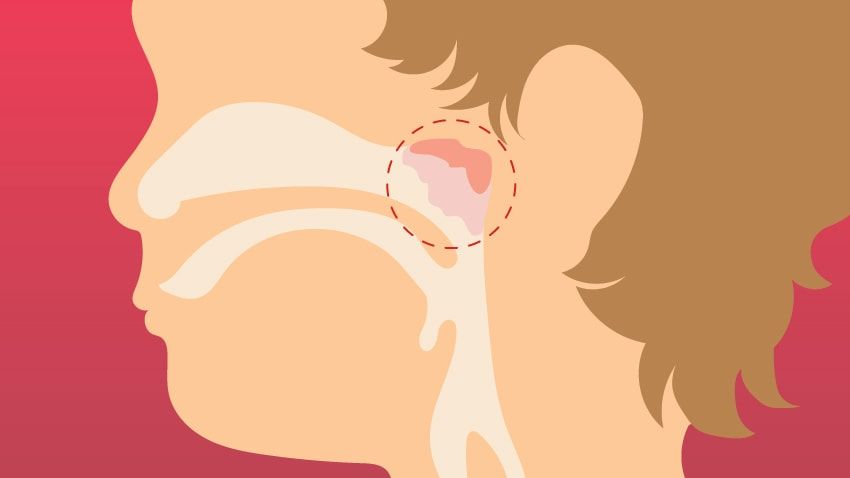
Causes of a Bloody Nose
The most common type of nosebleeds are called anterior nosebleeds and start on the nasal septum, which separates the two sides of the nose. The septum contains blood vessels that can be damaged easily by scraping them with a fingernail (picking your nose) or from vigorous nose blowing. Anterior nosebleeds can also be caused by dry, heated air or external trauma (such as being hit in the nose with a ball).
A posterior nosebleed originates in the deepest part of the nose. Blood will flow down the back of throat. These are rare, but more serious, and more common in people with high blood pressure, older adults, and in people who sustain injuries to the face or nose.
Other causes of nosebleeds include:
- Medications that prevent blood clotting, such as warfarin, or nonsteroidal anti-inflammatory drugs (NSAIDs), such as ibuprofen
- Genetic or inherited clotting disorders, such as hemophilia or von Willebrand disease, or hemorrhagic telangiectasia, a disease involving blood vessel growths inside the nose
- Head injuries
- Benign or malignant tumors
When adults get nosebleeds, it could be an indicator of a more severe medical problem, especially if they are frequent. Be sure to tell your doctor if you have gotten bloody noses, especially without physical trauma.
Around 60% of people will experience a bloody nose in their lifetime. Nosebleeds are most common in children from 2 to 10 years old and in adults age 50 to 80.
How to Stop a Bloody Nose
Fortunately, basic first aid measures are usually all that’s needed to stop a bloody nose. Here’s what to do if you experience one:
Lean Forward, Not Back
One of the biggest myths in first aid is that you should lean back with a bloody nose, but the best thing to do is to lean forward. The blood needs to go somewhere, and if the patient leans back or lies down, it will most likely go down the throat. Blood could get in the windpipe causing a blocked airway, or go into the stomach. Blood may irritate the stomach lining and cause the patient to vomit.
Pinch the Nose (Correctly)
Most people instinctively pinch the nose during a nosebleed, but there’s a right way to do it versus a wrong way.
Pinch the patient’s nose just below the bony bridge. Don’t just pinch the nostrils closed. Your fingers should be on the bone as well as the soft tissue. If there is still blood flowing, adjust your grip. There should not be visible bleeding while you are holding the nose. When you’re doing it correctly, the patient should be able to breathe through the nose while you’re pinching the blood flow off.
Pinching the nose properly stops or slows the blood flow to allow a clot to form and stop the bleeding. Hold the nose for at least five minutes. Do not let go to check for bleeding until at least the first five minutes are up. If you can, keep the pressure on for more than five minutes.
After five minutes, release the pressure to see if the bleeding has stopped. If not, pinch again, but keep it up for 10 minutes this time. Remember: Don’t let go to check for bleeding until the 10 minutes are up. If bleeding doesn’t stop after 10 minutes, repeat for another 10 minutes if necessary.
Stay Upright
Always sit up straight when your nose is bleeding, and never lie on your back. As with tilting your head backward, this can cause the blood to go down your throat into your stomach and potentially cause choking or vomiting. Keeping your head above your heart also reduces blood pressure in the veins of your nose, which discourages bleeding.
Additional Tips
Other things you can do when someone has a nosebleed include:
- Place ice or a chemical cold pack over the bridge of the nose. This can constrict the blood vessels and help stop bleeding. Ice isn’t going to stop a bloody nose by itself, but it may help.
- Spray a nasal decongestant in the nostril where the bleeding is occurring and then proceed to pinch the nose as suggested.
- Avoid putting anything up the nose to absorb the blood, such as a a tissue or a cotton ball.
- Remain calm (or keep your child calm if they are the one with the bloody nose).
After the Nosebleed Stops
Once you have stopped the nose from bleeding, it’s important to let the blood vessels constrict so the bleeding doesn’t start again. If you were able to stop the initial bleeding within 10 to 15 minutes and your nose starts bleeding again, repeat the steps again.
Don’t blow, rub, or put anything inside your nose, and do not bend over or lift anything heavy.
If the Bleeding Won’t Stop
If a nosebleed doesn’t stop after the second or third try to apply pressure, it’s time to go to the emergency room.
If the bleeding is rapid and the person is losing a lot of blood (more than a cup), if the blood is going down the back of the throat, if the person has vomited up blood, or if at any time the patient feels lightheaded, dizzy, or weak, call 911.
A bloody nose is a medical emergency when:
- It hasn’t stopped after 20 minutes.
- You’ve lost more than a cup of blood.
- You can taste blood in your mouth.
- You have high blood pressure.
- The nosebleed was caused by trauma to the face.
How to Prevent Nosebleeds
If you or your child are prone to getting bloody noses, here are ways to prevent them:
- Don’t pick your nose.
- Blow your nose gently when you have a cold or allergies.
- Run a humidifier if you live in a dry climate or during the winter months.
- Moisturize the inside of your nose with a non-prescription saline nasal spray, or a dab of petroleum jelly on the inside of your nostrils.
- Wear a seatbelt in the car and headgear to protect your face during contact sports to avoid facial trauma.
- Quit smoking. Smoking dries out the nasal membranes.
Frequently Asked Questions
How do you stop a nosebleed?
Have the person sit upright and lean the head forward, not back. Then, pinch the nose above the bony bridge and hold it for 10 to 15 minutes.
What causes a bloody nose?
Most nosebleeds are caused by picking the nose, dry and heated air, or vigorous nose-blowing; all of these damage the tiny capillaries inside the nose, causing them to bleed. Causes of more serious nosebleeds include a head injury, a genetic disease, or, in some cases, a tumor.
When should I worry about a nosebleed?
If the bleeding continues for more than 20 minutes, there is excessive bleeding (more than a cup), or you have swallowed blood, you should go to the emergency room or call 911.
How do I stop a nosebleed that won’t stop?
Try the recommended technique (pinching the nose for 10 to 15 minutes). If a nosebleed doesn’t stop after the second or third try, it’s time to go to the emergency room.
What should I do after a nosebleed?
Once you have stopped the nosebleed, make sure not to blow, rub, or put anything inside your nose, and do not bend over or lift anything heavy, as this may cause it to start bleeding again.
Here’s What Causes Nosebleeds and How to Stop Them
Causes of Nosebleeds
Sudden and inexplicable nosebleeds may seem scary, but typically they’re not. To put you at ease in case you have one, we’ve assembled a list of common culprits, as well as tips on how to treat a bleeding nose and when to seek medical care.
1. Underlying Health Conditions
Liver disease, kidney disease, chronic alcohol consumption, or another underlying health condition can lower your blood’s ability to clot and therefore cause your nose to bleed.
Heart conditions like hypertension (high blood pressure) and congestive heart failure can also cause nosebleeds, as can hypertensive crisis — a sudden, rapid increase in blood pressure that may be accompanied by a severe headache, shortness of breath, and anxiety, according to the American Heart Association (AHA).
Colds, allergies, and frequent nose-blowing can also irritate the lining of your nose, resulting in a nosebleed.
2. Dry Air
Dry air from indoor heating or outdoor cold can dry out the lining of the nose, causing it to crack and bleed. Using a humidifier while sleeping can help relieve dryness, and nasal sprays are helpful for moistening the nostrils.
3. Foreign Objects
Nosebleeds can also occur if a foreign object is placed in the nose. This is most common among small children, who explore their world by putting objects in their mouth, nose, or ears. Examples of these items include small toys, pebbles, food, erasers, and dirt.
4
. Blood-Thinning Medications
Because blood clotting is a necessary step in preventing or stopping a nosebleed, any medication that changes the blood’s ability to clot can cause a bloody nose — or make one harder to stop. Examples include anticoagulants like Coumadin or Jantoven (warfarin), the anti-platelet medication Plavix (clopidogrel bisulfate), over-the-counter drugs like aspirin, and prescription or over-the-counter NSAIDS like naproxen.
Many people with the heart condition atrial fibrillation (afib), an irregular heartbeat, take anticoagulant medication to prevent blood clots from forming. And if you’ve had a heart attack, your doctor may have recommended a daily aspirin to help prevent a recurrence. Blood clots can lead to a stroke or heart attack if they travel through the blood and reach the brain or heart, but the anticoagulant medications commonly used to prevent clots carry an increased risk of bleeding.
5
. Nose Picking or Scratching
Accidental injury to the blood vessels in the nostril from nose picking can cause a nosebleed. This is common in children, but also in adults who are prone to itching or scratching inside their nose.
How to Stop a Bloody Nose at Home
- While sitting and leaning forward, use direct pressure to stop bleeding by pinching your nostrils shut for at least 10 minutes, breathing through your mouth.
- Alternatively, you can make a nose-pinching device using tongue depressors and tape.
- If bleeding starts again, use a nasal decongestant spray (such as Afrin, Dristan, or Vicks Sinex) to constrict the blood vessels of your nose, and again apply direct pressure to stop bleeding.
To prevent another bloody nose, use saline and topical ointments to moisturize inside your nose, but only once bleeding has stopped. And avoid picking or scratching your nose.
When to Get Help for Nosebleeds
Although most nosebleeds can be treated at home, some are severe and require medical attention. Kevin Campbell, MD, a cardiologist at Wake Heart and Vascular in Raleigh, North Carolina, says “Nosebleeds are rarely life-threatening. But under certain circumstances, such as if you’re taking blood thinners like aspirin or warfarin, nosebleeds can be quite concerning and require medical care.” In such cases, your healthcare provider may need to adjust the dose of blood-thinning medication, he says.
Having more than one nosebleed a week is also a sign that you should talk to your doctor. “If nosebleeds are recurrent — whether or not you’re on blood-thinning medications — it’s reasonable to seek help from your primary care physician,” says Dr. Campbell. He adds that recurrent nosebleeds may point to other, more significant medical conditions.
“You should certainly seek medical attention in an emergency room if your nosebleed lasts longer than a few minutes, or if you’re unable to stop the bleeding with direct manual pressure,” Campbell says.
Additional reporting by Ashley Welch
Cryotherapy for vasomotor and allergic rhinitis
“ Doctors prescribed me an operation for difficult nasal breathing. But I’m afraid of pain, I’m afraid of blood. Is it possible to solve my problem with another method? And in general, what to do with chronic rhinitis, why does it last so long and so poorly responds to treatment? “Alexandra Potapova, Zvenigorodsky district, Cherkasy region.
Andrey Rybalko, otolaryngologist of the highest category, Kiev clinic of cold treatment “Medkrionika”, answers the question.
The doctors of the Medkrionika clinic are just opponents of “bloody” surgery, because they believe that there is nothing superfluous in the body. The unique method of cryotherapy for rhinitis, developed by Medkrionika, has already been successfully applied in the treatment of several thousand noses.
– In general, there are several types of chronic rhinitis – protracted, lasting for months. Its two forms are especially inconvenient: vasomotor (about 60 percent of all cases) and allergic. The first to suffer are people with general disorders of the nervous system; a variety of reasons can serve as an impetus here – hypothermia, pressure drop, etc.The second one makes itself felt mainly in spring, during the flowering of trees and plants, when allergens penetrate into the body during breathing. Unlike acute rhinitis (runny nose), which with timely treatment (spray, aspirin, warm tea with raspberries, honey, lemon, etc.) goes away in 5-8 days, the treatment of chronic rhinitis is a difficult and not quick task.
And only in extreme cases, when medications do not help, doctors even go to remove the turbinate.
You can try hardening the body or self-massage.For example, with a vasomotor rhinitis, it is recommended to massage the cervico-occipital region several times a day. First, a light warm-up is carried out alternately with the right and left hand, for 3 – 4 minutes, starting from the occipital protuberance and up to the level of the shoulder girdle. Then for 4 – 5 minutes a deeper massage – with the edge of the thumb bent at the joint, which massages the neck in zigzag movements. It makes sense to carry out such self-massage with the help of special massagers that are sold in sporting goods stores.
However, the most effective method is cryodestruction, cold treatment. It is justified from the point of view of human physiology itself – after all, we have 10 times more cold receptors than heat receptors.
Cryotherapy originated in Ancient Egypt, and today it is actively used in the form of the latest technologies in many areas of medicine: erosion of the uterus, fibroids, papillomas, warts, even malignant tumors (for example, lip cancer), brain tumors are frozen.
In Ukraine, cold treatment of chronic rhinitis began 45 years ago.The bottom line is this: with the help of a special cryo instrument, the mucous membrane of the inferior turbinate is “frozen”. Under the influence of an ultra-low temperature (the boiling point of liquid nitrogen is minus 196 degrees), the cells affected by the disease begin to die off, and with the help of secretions they are rejected from the patient’s body. After 10-14 days, a new epithelial layer begins to form, while the body’s defenses are activated. So much so that in 8 out of 10 patients, after 2 weeks, breathing becomes free and chronic rhinitis goes away almost forever.The rest also have an effect, but satisfactory; as a rule, the reason for this is the physiological characteristics of the patient.
The biggest advantage of cryotherapy for rhinitis is that it is done “here and now”. That is, on an outpatient basis, bloodless, quickly (in total, the entire appointment takes up to 30 minutes), moreover, under local anesthesia. A certain inconvenience for the first 2-3 days after such a mini-operation is edema: it is almost impossible to breathe through the nose, but it quickly passes (as a rule, after cleaning the nose).So cryotherapy is recommended for almost everyone, with the exception of people with very high, over 200, blood pressure (although you can choose an individual scheme for them). Another thing is that if younger patients can be treated with both nostrils in one day, then older people should take a break of 1 – 1.5 months. For those who have long suffered from hypertension, cardiovascular diseases, it is also better not to take risks and carry out treatment in a sparing mode.
Rybalko Andrey, otolaryngologist at the Medkrionika clinic
Nasal liquorrhea – what is it?
Dmitry Kapitanov, otorhinolaryngologist, otoneurologist, professor, doctor of medical sciences is speaking
Nasal liquorrhea (NL) – the leakage of cerebrospinal fluid into the nasal cavity – is a rather rare but potentially fatal disease that is not always correctly diagnosed by doctors and can exist for many years under the guise of allergic or vasomotor rhinitis.CSF fistula (a channel through which fluid flows) occurs due to a defect in bone structures and meninges. If the bone defect is large, the membranes and substance of the brain can fall through it, creating a hernial sac, which is called meningo (encephalo) cele.
Forms
Such a fistula can form as a result of craniofacial trauma, previous surgery in the nasal cavity and at the base of the skull. Or spontaneously, against the background of increased intracranial pressure.Thus, a distinction is made between traumatic and spontaneous nasal liquorrhea. In turn, spontaneous nasal liquorrhea can be congenital, as a result of intrauterine disorders in the formation of bone structures of the base of the skull, or acquired. In the latter case, a fistula can form against the background of a variety of problems. These include metabolic disorders, increased weight, increased intracranial pressure, anomalies in the development of the anterior parts of the skull base, etc.
What is the danger?
By itself, the abundant discharge of fluid from the nose is quite unpleasant, since it seriously reduces the quality of life.But the more serious complication is meningitis, i.e. inflammation of the membranes and substances of the brain, since there are conditions for the penetration of infection from the nasal cavity into the cranial cavity in case of any colds. Another formidable complication is pneumocephalus, when air is introduced into the cranial cavity through an open fistula. These complications require urgent hospitalization of the patient.
Symptoms
Symptoms of profuse nasal liquorrhea:
When the head is tilted, a clear, light liquid is released from one half of the nose.
Latent, recurrent nasal liquorrhea is more difficult to diagnose and requires the use of the entire arsenal of techniques – laboratory and radiation. In the supine position, a cough occurs, since the liquor flowing into the oropharynx can enter the lower respiratory tract, causing reactive laryngitis, tracheitis, and even pneumonia. Liquorrhea complicated by meningitis is manifested by a wide range of neurological disorders.
A patient with nasal liquorrhea usually has a history of traumatic brain injury or surgery involving the nose and paranasal sinuses, including endoscopic surgery.In this case, spontaneous nasal liquorrhea can begin suddenly without an obvious apparent reason.
Diagnostics
First of all, the doctor determines the nature of the discharge:
the side from which the discharge comes,
periodicity,
specific head positions in which they appear,
dependence of the volume of discharge on stress (Valsalva test).
The figure shows a visual examination of the patient. When the head is tilted downward, a clear liquid begins to stand out from the nose.
Nasal liquorrhea is often mistaken for rhinitis (allergic or vasomotor). It can also remind patients of the condition when the nose is irrigated with liquid medicines.
Profuse nasal liquorrhea can independently stop for a while, while patients note a headache due to fluctuations in intracranial pressure.
Damage to the anterior parts of the skull base may be indicated by:
impaired sense of smell (hyposmia or anosmia),
vision problems.
A standard survey should include:
Endoscopic examination of the nose and paranasal sinuses (in the figure – endoscopy of the nasal cavity with a direct endoscope; in the projection of the posterior wall of the sphenoid sinus, a small bone defect is visible through which the cerebrospinal fluid enters).
Rhinoscopy.
Hearing examination for the presence of auricular liquorrhea,
Neurological examination,
Biochemical analysis of liquid nasal discharge for glucose level, determination of CSF-specific proteins (beta-2 fraction of transferrin, trace protein).
Radiological methods:
Computed tomography (CT) of the base of the skull and paranasal sinuses (the figure shows a large defect in the base of the skull in the projection of the sieve plate with the formation of meningocele (arrow)).
CT cisternography with endolumbar contrast injection to more accurately determine the location of the defect at the base of the skull.This study is performed in a hospital setting.
CT of the skull and brain to exclude hydrocephalus, neoplasms of the base of the skull, and identify meningocele.
Magnetic resonance imaging (MRI) is an addition to CT to exclude meningoencephalocele.
CSF-sensitive MRI. It is non-invasive, has no radiation load, and takes slightly longer than conventional MRI.
Treatment
Treatment of nasal liquorrhea is mainly surgical. For many years, it required severe, sometimes disabling interventions on the base of the skull using transcranial approaches. Over the past three decades, the development of methods of endonasal endoscopic surgery has radically changed the situation, and now most cases of nasal liquorrhea can be cured by sparing minimally invasive interventions performed without external incisions through the nasal cavity under endoscopic control, which allows the surgeon to significantly improve the view of the operating field.The endoscope helps the surgeon to determine the location of the cerebrospinal fluid fistula, carefully separate the mucous membrane from the bone defect, and precisely place the graft at the site of injury.
The method of surgical intervention is determined jointly by an otorhinolaryngologist-surgeon and a neurosurgeon. In some cases, it is precisely neurosurgical intervention that is required. For example:
Large or multiple bone defects.
Traumatic brain injury with brain compression.
With increased intracranial pressure, when plastic surgery of the fistula cannot be performed, before the hypertension is eliminated with the help of bypass surgery.
With a complex location of the fistula.
Treatment of nasal liquorrhea is primarily aimed at restoring the barrier between the nasal cavity and the intracranial space so that an intracranial infection does not develop.At the same time, soft tissues, rather than bone fragments, can be used to repair small defects in the base of the skull. But with large bone defects, they must be closed with a dense cartilage graft so that an encephalocele (cerebral hernia) does not form.
Postoperative period
After surgery, patients are usually advised to follow the following recommendations: avoid increased physical exertion, prolonged straining, forced coughing.The regime should be as gentle as possible. If possible, try to be more in the supine position, raise the head end of the bed. If the signs of nasal liquorrhea completely disappear, the patient is discharged with recommendations that must be followed for at least 6 weeks.
It is recommended to carefully remove some of the tampon fragments from the nasal cavity within 3-10 days after the operation. In this case, absorbable materials located directly near the graft remain and are removed later.For the entire postoperative period, antibiotics are prescribed in doses that prevent the development of sinusitis.
In the late postoperative period, at each visit of the patient, an endoscopic examination is performed to exclude the recurrence of encephalocele, especially if the plastic of a large defect was performed. It is important to subsequently carry out the differential diagnosis of rhinoliquorrhea with allergic, vasomotor and viral rhinitis.
Summary : Thus, nasal liquorrhea is a rare but rather dangerous disease that can lead to serious complications, including meningitis and pneumocephalus.Differential diagnosis with rhinitis is not always simple and unambiguous, therefore, a timely correct diagnosis is the key to adequate treatment. In view of the above, an examination by a specialized specialist is the first and necessary link in the diagnosis. In case of confirmation of nasal liquorrhea, a low-traumatic operation is required to restore the integrity of the skull base.
90,000 Causes of Frequent Bloody Noses – Health
“What Causes Frequent Bloody Noses?” Doctors often hear this question, especially from parents.They may report that their children sometimes nose-hit or fall and have nosebleeds.
Content
“What causes frequent bloody noses?”
Doctors often hear this question, especially from parents. They may report that their children sometimes nose-hit or fall and have nosebleeds. While this can be frustrating, at least these parents know the reason.
Even more troubling are nosebleeds that seem to occur for no reason.Sometimes babies wake up in the morning with blood on their pillows or dried blood around their nose or face. While there are many reasons for this, the simple fact is that some people are more prone to frequent bleeding noses, especially in dry weather or as a result of habits they may not even be aware of.
Causes
The following conditions or diseases increase the likelihood of developing a bloody nose:
- Dry mucous membranes from low humidity or dehydration
- Very cold air
- Allergies
- Chemical irritants
- Frequent nose picking or rubbing
- Blowing your nose or sneezing too much
- Overuse of nasal decongestant sprays
- Nasal infections A deviated septum
- Colds and other upper respiratory tract infections
- Insertion of a foreign object into the nose
- Trauma or trauma
Less common but often more serious causes of nosebleeds include:
- High blood pressure
- Blood thinning drugs, such as aspirin or warfarin.
- Blood clotting disorders such as hemophilia
- Hereditary hemorrhagic telangiectasia (HHT), a genetic disorder that results in abnormal formation of blood vessels.
- Tumors of the nose or sinuses
Children tend to have more nosebleeds than adults because they are more likely to pick or lose their noses or insert objects into their nostrils. With that said, people of any age can get nosebleeds and need to be treated appropriately to stop the bleeding.
How to stop nosebleeds
If you or your child has sudden nosebleeds:
- Sit rather than lie down to reduce blood flow.
- Pinch the soft part of the nose just above the nostrils for 10-15 minutes.
- Placing an ice pack on the bridge of the nose may also help.
If the nosebleeds persist after 20 minutes, see a doctor immediately or go to the nearest emergency room.This is especially true if the bleeding is heavy, was caused by a blow to the face, or causes dizziness or fainting. …
Treatment
Addressing the underlying causes of frequent bleeding noses is likely to be the most effective way to prevent recurrence. Sometimes this approach needs to be combined with other treatments.
There is limited research on the treatment of frequent bleeding noses. However, researchers at Harvard Medical School published a study looking at different treatment options.Research shows that chemical moxibustion (spraying a chemical into the nose to constrict blood vessels), surgical dressing (ligation of a ruptured blood vessel in the nose), embolization (blockage of bleeding blood vessels) most likely prevented the recurrence of bloody noses. long-term.
Patients who underwent these procedures had better outcomes and a shorter hospital stay than patients with nasal bleeding who were treated with, for example, nasal packing.
Despite its effectiveness, nasal embolization is associated with the risk of stroke, loss of vision, ophthalmoplegia (restriction of eye movement), facial paralysis and hematomas (blood clots). Talk to your doctor to understand the benefits and risks of the
procedure
Prophylaxis
Not all nosebleeds can be prevented. But if you frequently experience bleeding noses, here are a few things you can try to reduce their number and / or severity:
- When sleeping, use a cool humidifier located next to your bed.
- Try an over-the-counter saline nasal spray (but do not push the tip too deep into your nose as this can further damage the tissues).
- Use a neti pot.
- Treat any underlying allergy or nose infection.
- Avoid rubbing or picking your nose.
- Trim your child’s nails regularly.
Epistaxis, although rare, can sometimes be a sign of a serious medical condition such as tuomra.If nosebleeds continue or recur, you should consult your doctor.
When to worry about nosebleeds
comments powered by HyperComments
90,000 Aftertaste of Truth – Teachers’ Newspaper
Recently a significant event took place in our district library. (To be honest, I did not expect that so many Mozdok residents would gather on a weekday.) War veterans, home front workers came, which is especially gratifying, there were many young people.
Alexander PROKOPOV, Mozdok, North Ossetia-Alania
Here they are, young people, pupils of the eighth school, who prepared this wonderful event, the librarian Yulia Vladimirovna Yurova became its initiator and leader. She also took care of the outfit of the young artists. And the class teacher of the 10th “B”, the teacher of the Russian language and literature Nadezhda Alekseevna Statsenko, helped in everything.
Before us, the audience, there were pictures of military life – from the forty-first to the forty-fifth.
Then veterans of war and labor, library workers, readers warmly thanked the guys, asked to show this composition in other audiences.
I looked at the guys from the eighth school, and touched to the depths of their souls their excitement, sincerity, desire to convey the spirit of those times far from them. Thank God, our Mozdok guys are not the same as in that sensational series “School”. And parents are not like that! And as they say, in our troubled region there is no such cynicism and rudeness that permeates that series.
They say that everything is true in him. I do not believe.
I would like to tell you about the role of art by my example. Cinema for us, post-war boys, was a real miracle. I remember we all pestered the projectionist Grisha: “What film will you bring back?” He, as always, laughed it off, but one day he said seriously: “Soon there will be“ Young Guard ”. We have not yet studied this work of Alexander Fadeev at school, but we have already heard about the feat of Krasnodon from the elders.
“Well, when, when?” And finally, uneven lines appeared on the wooden billboard near the club: “Color thin.the film “Young Guard”. My brother and I barely waited for the evening (in childhood, after all, the days are so long, long). And now a “denyuzhka” is clamped in a sweaty fist, barefoot we spanked on the cleanly washed unpainted floor into the hall. Everyone sat down, the controller checked the free riders. The engine rattled, the projectionist turned off the lights in the hall, and it began …
For almost two hours I find myself in a terrible occupied world, which, however, did not manage to break my youth. How I want to be close to Seryozha Tyulenin, who for me is still unconsciously already an idol! And palms trembling with excitement involuntarily applaud Lyubka Shevtsova, who is throwing a shoe-grenade at the Nazis.And how not to admire Ulyana Gromova and, of course, Oleg Koshev.
Well, when they began to show the massacre of the Nazis with the Young Guard, many in the hall sniffed, and then, without hesitation, wept bitterly. Well, my heart, completely exhausted by what I saw, is already falling into the mine after everyone. And for the first time, tears, quick, uncontrollable, are caused not by pain or resentment, but by the grief of loss and pride in the strength of the spirit.
… All night I was tossed about under a patchwork quilt, saw the film frames from some exaggerated tragic angles.
– I don’t understand, something happened to my Shurik. Yesterday the boys and I went to the club, watched a movie – “The Young Guard”, and in the morning the whole patient was sick, – my mother complained to the paramedic.
– He’s too impressionable. Take care of him, Anna, – said the paramedic, examining me.
“What is this – the great power of art?” – I thought many, many years later.
The sixties were the best years of my life. Clubs and cinemas were full then. There was some kind of upsurge, a charge of optimism.I remember “Spring on Zarechnaya Street”. And how beautifully the real, true hero of the sixties Nikolai Rybnikov smiled from his mounting height. Again and again I worry about Volodya Ivashev, an immortal boy from The Ballad of a Soldier, who is leaving in the distance across the field. And how sincerely they sing very simple Pakhmutov songs in “Girls”. What a joy it is that justice has triumphed in “Clear Sky” with Yevgeny Urbansky.
Then we were not stunned by the shooting of American militants.

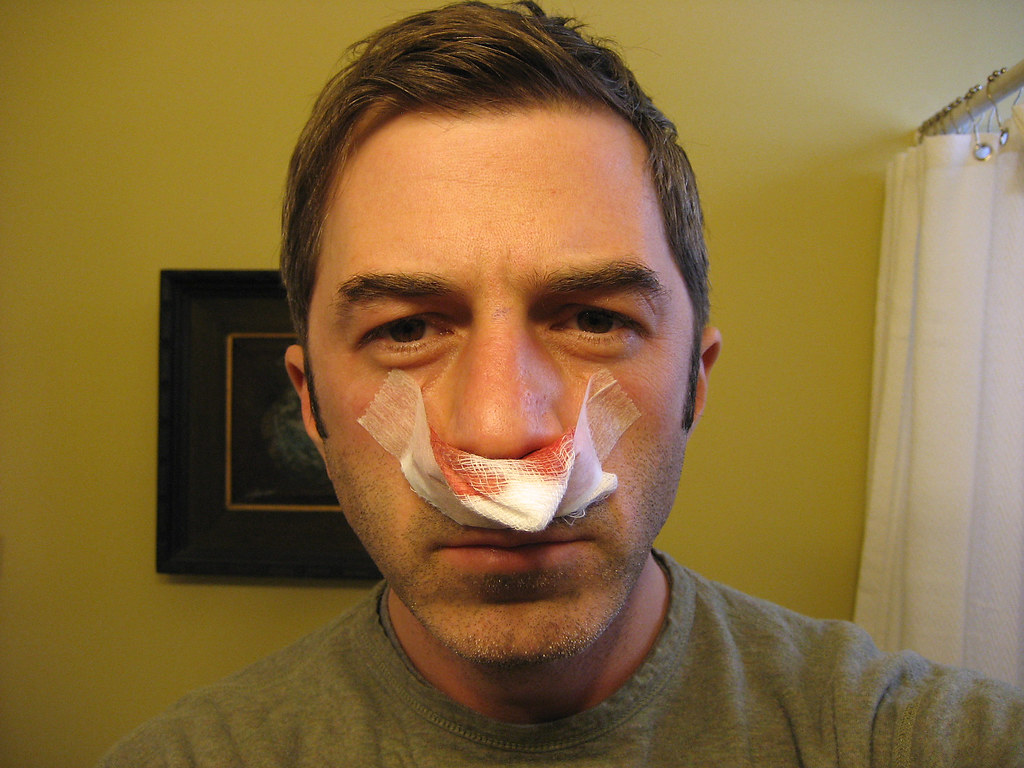 Try to relax.
Try to relax. Your nostrils might be dry because the air in your house is dry.
Your nostrils might be dry because the air in your house is dry.
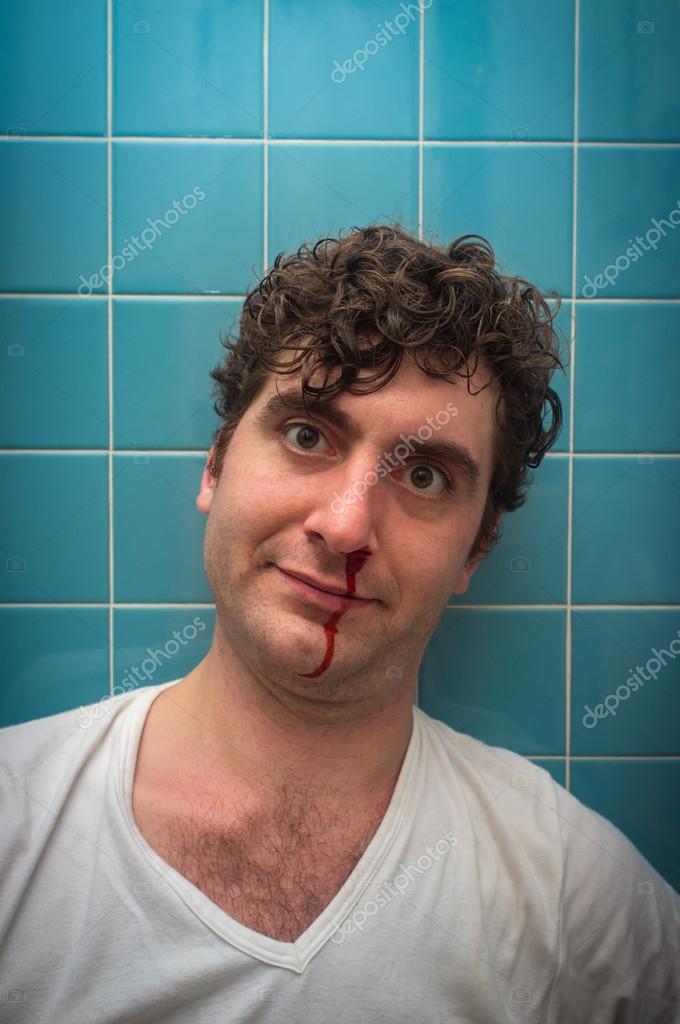
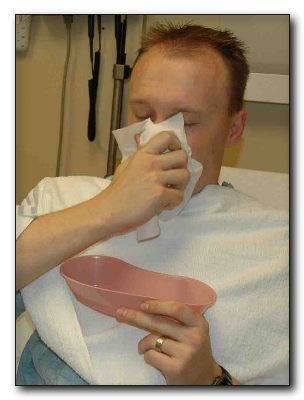



 This may cause you to choke on blood. Blood in the stomach can make you sick to your stomach and cause vomiting.
This may cause you to choke on blood. Blood in the stomach can make you sick to your stomach and cause vomiting.
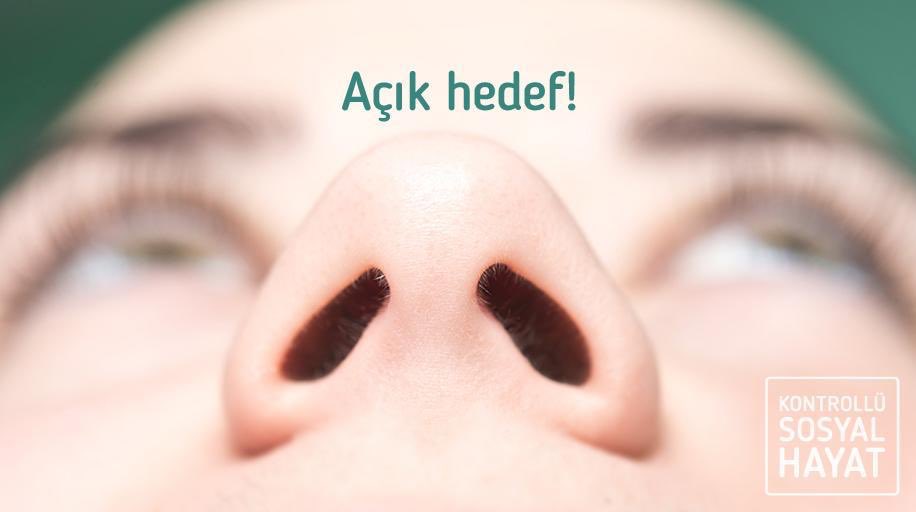
/GettyImages-960930644-c50a8fbf46af4387be4831ed7040dc09.jpg)